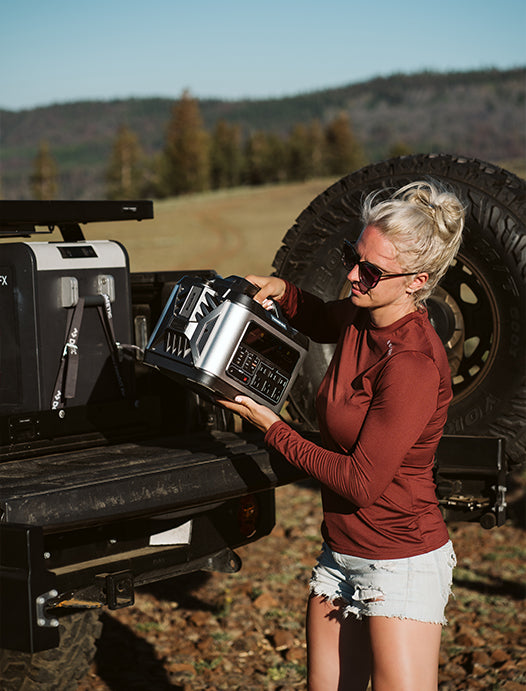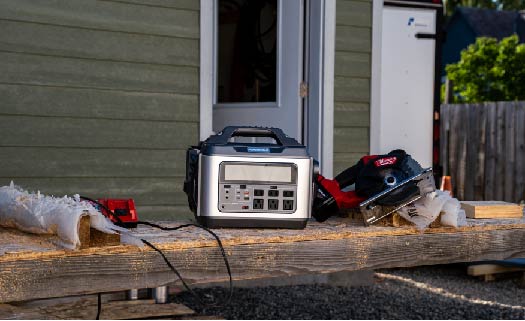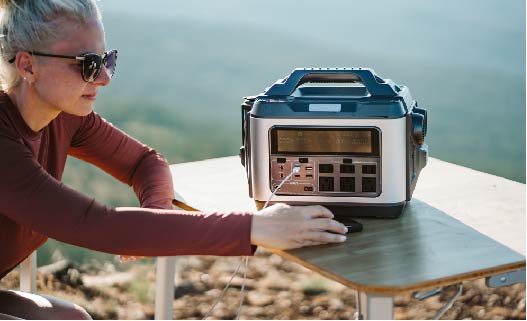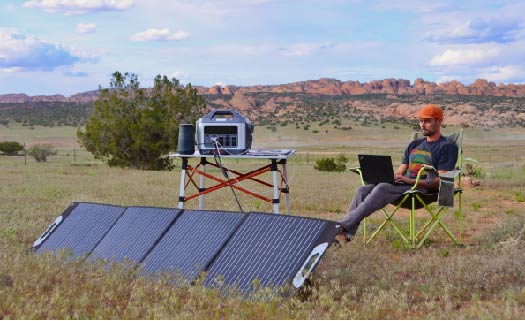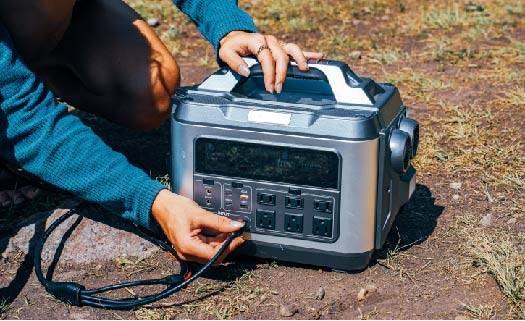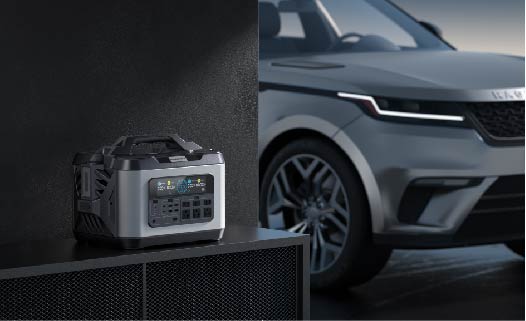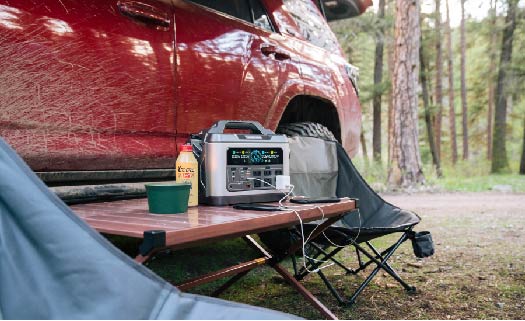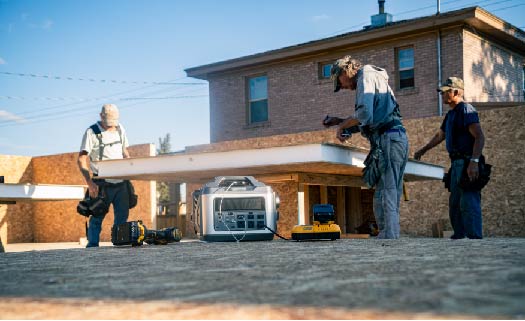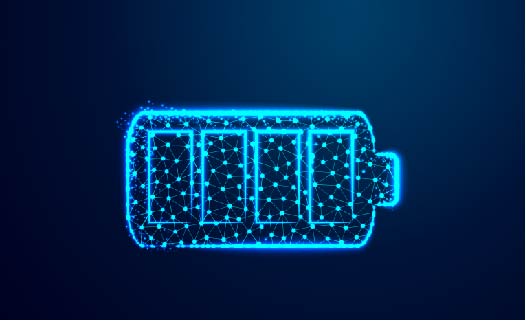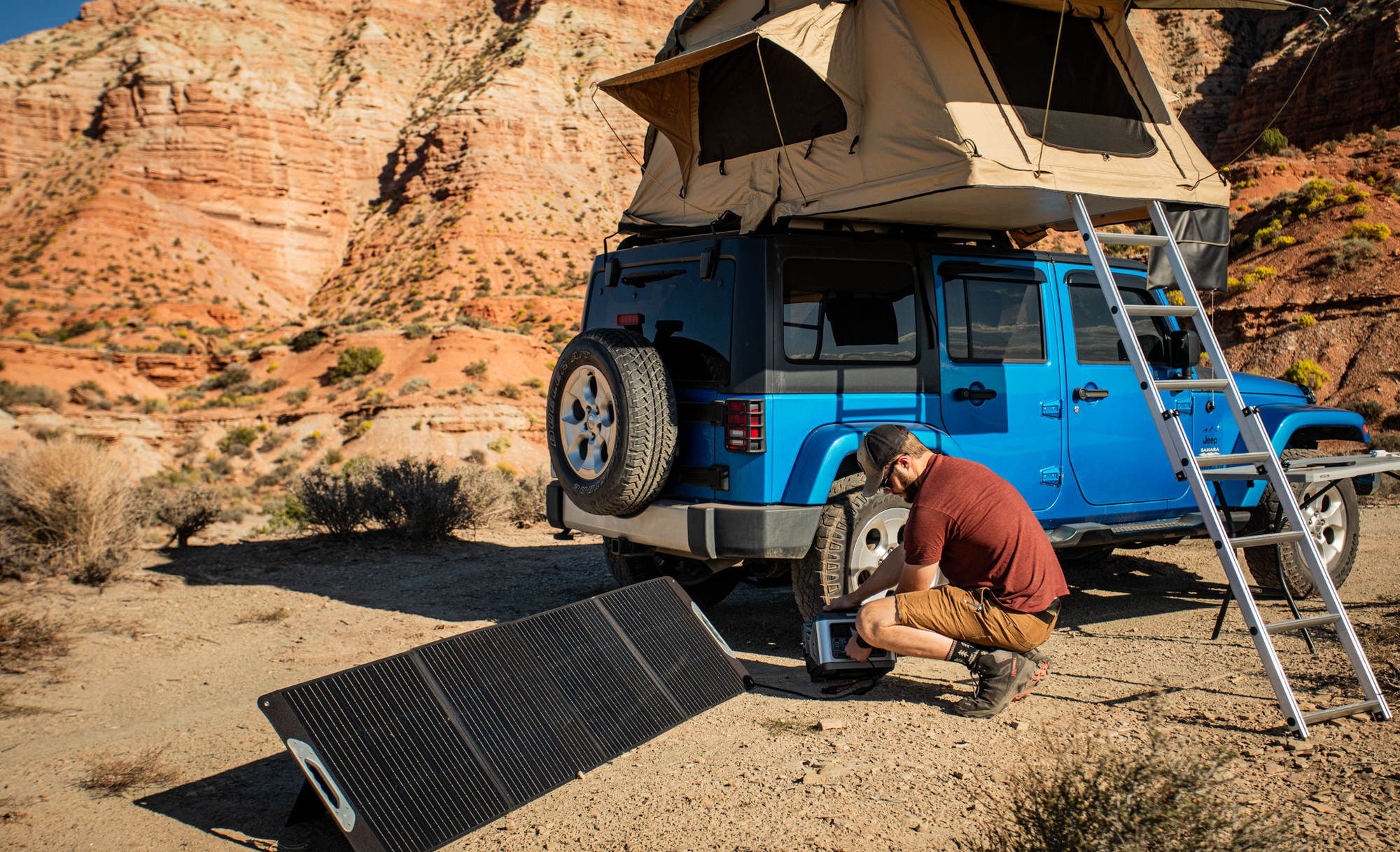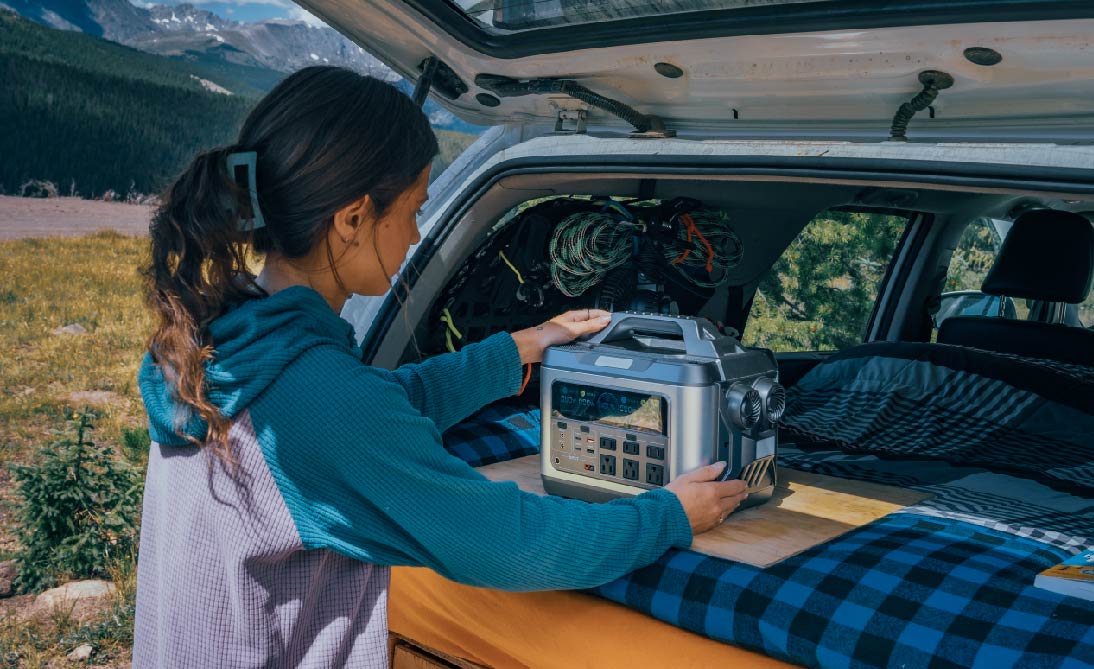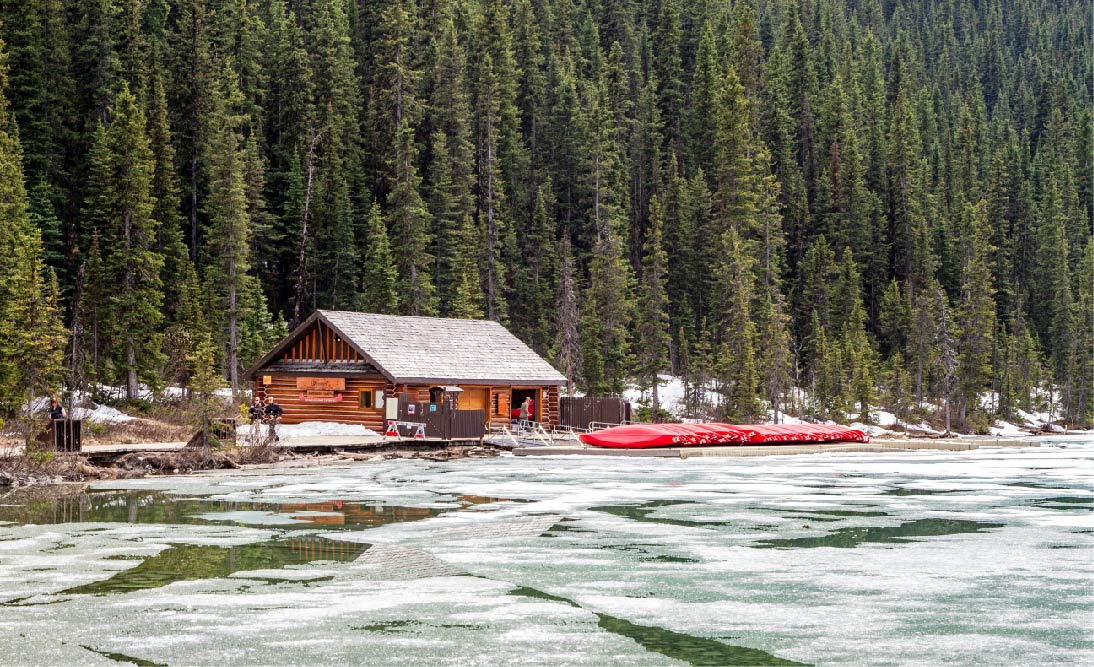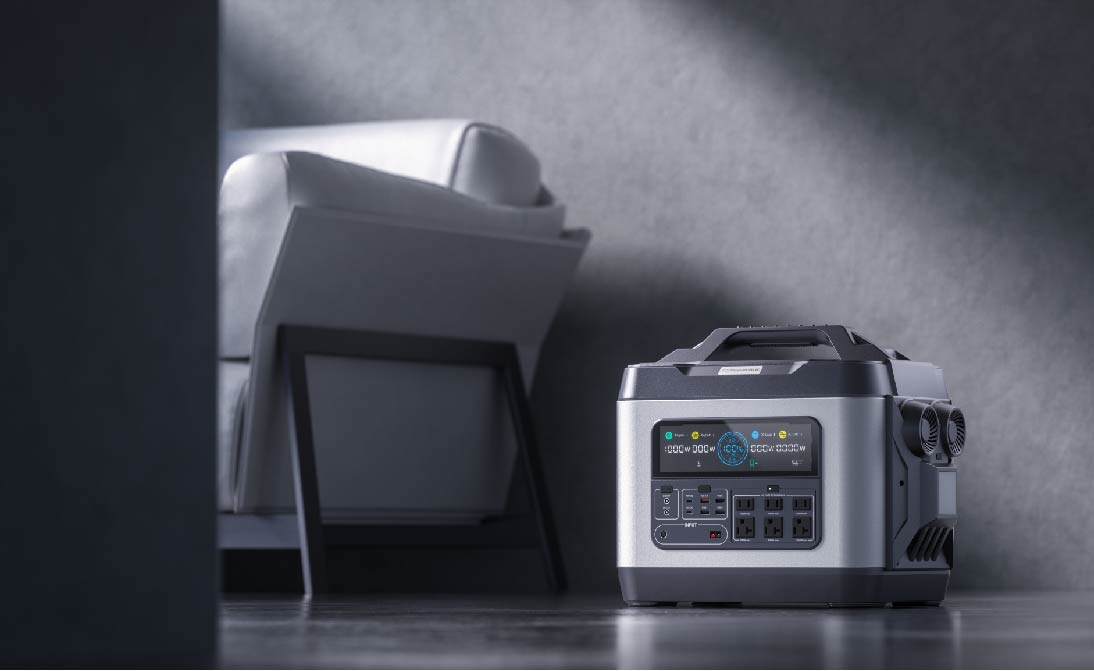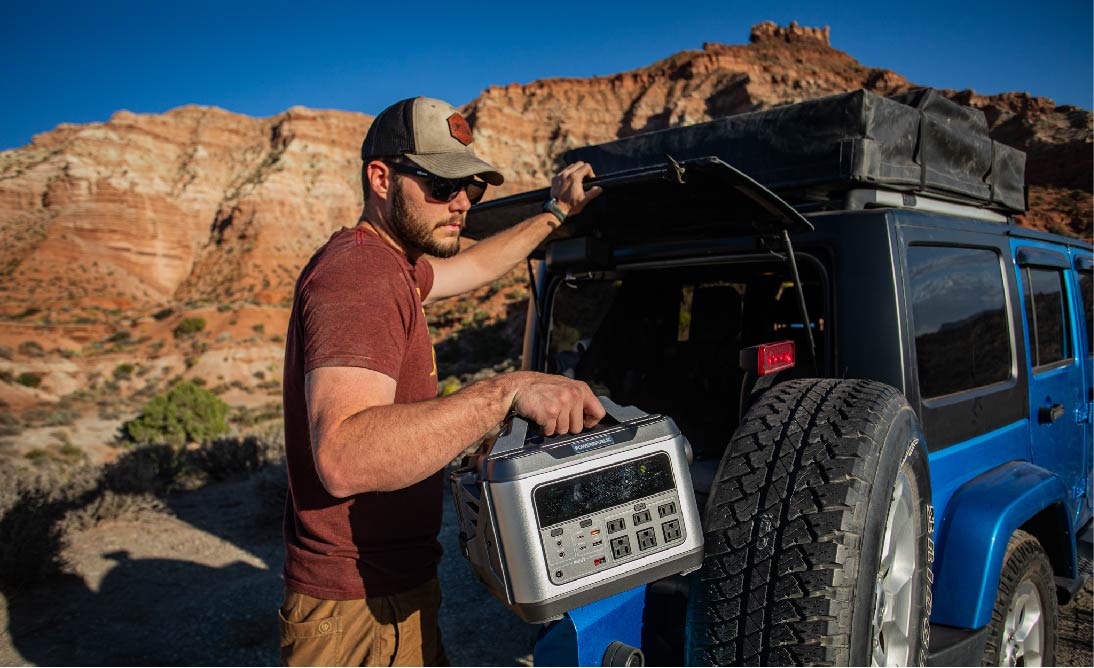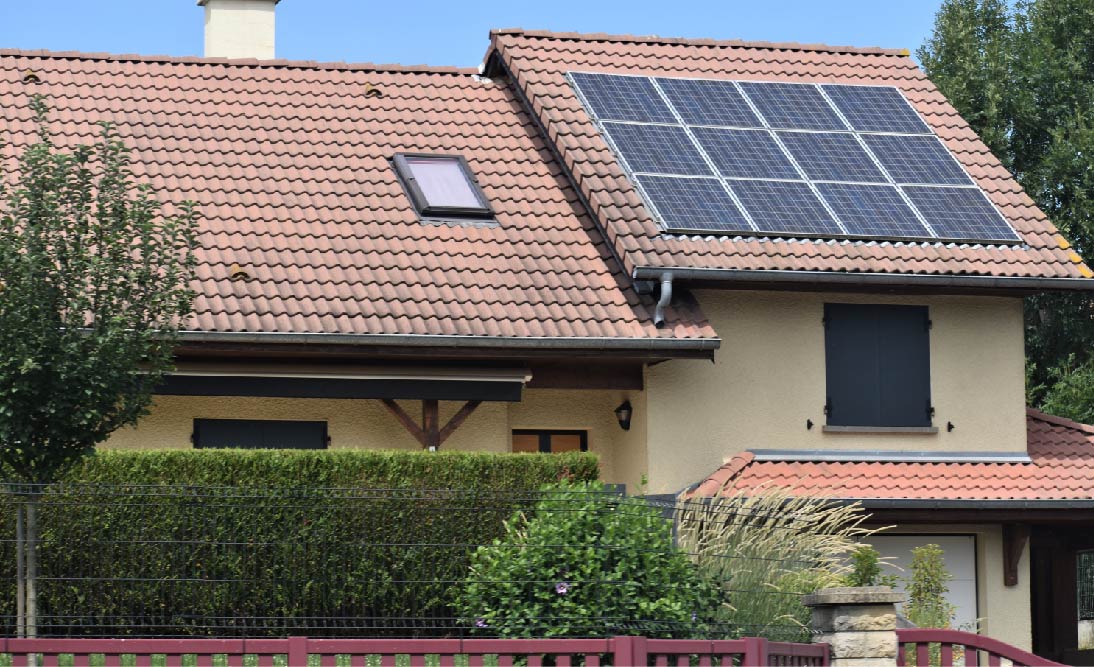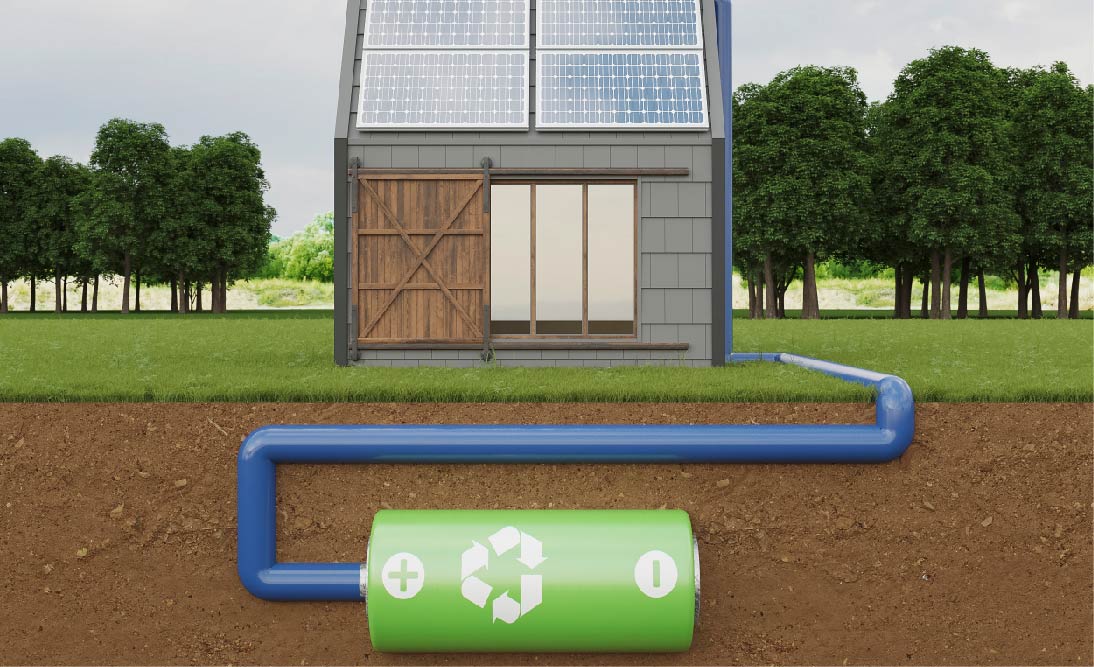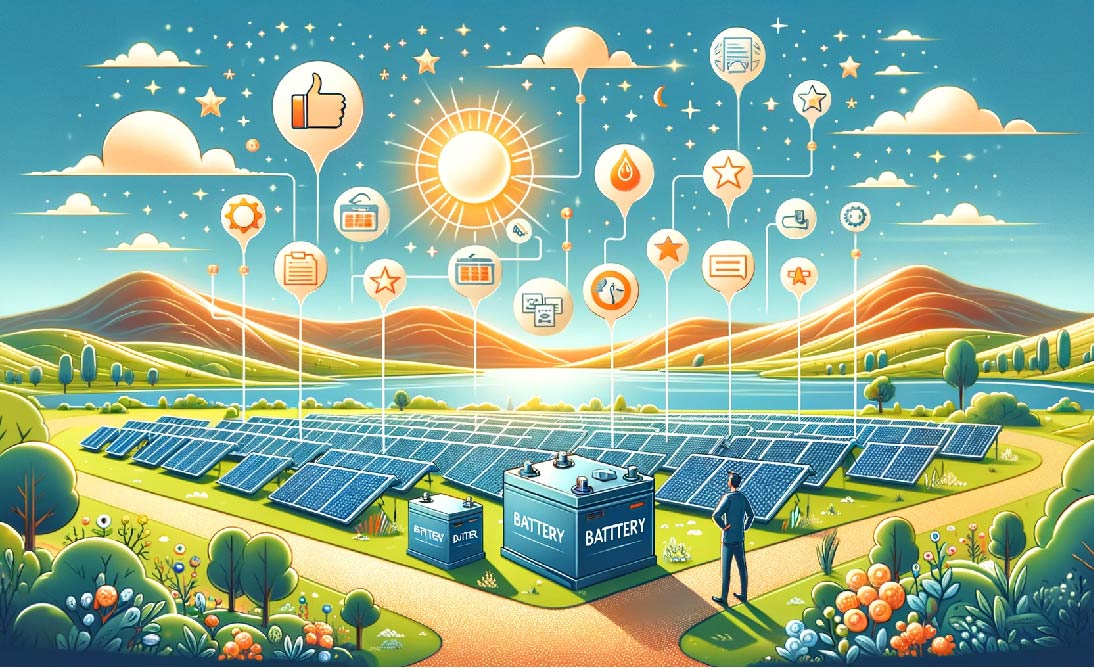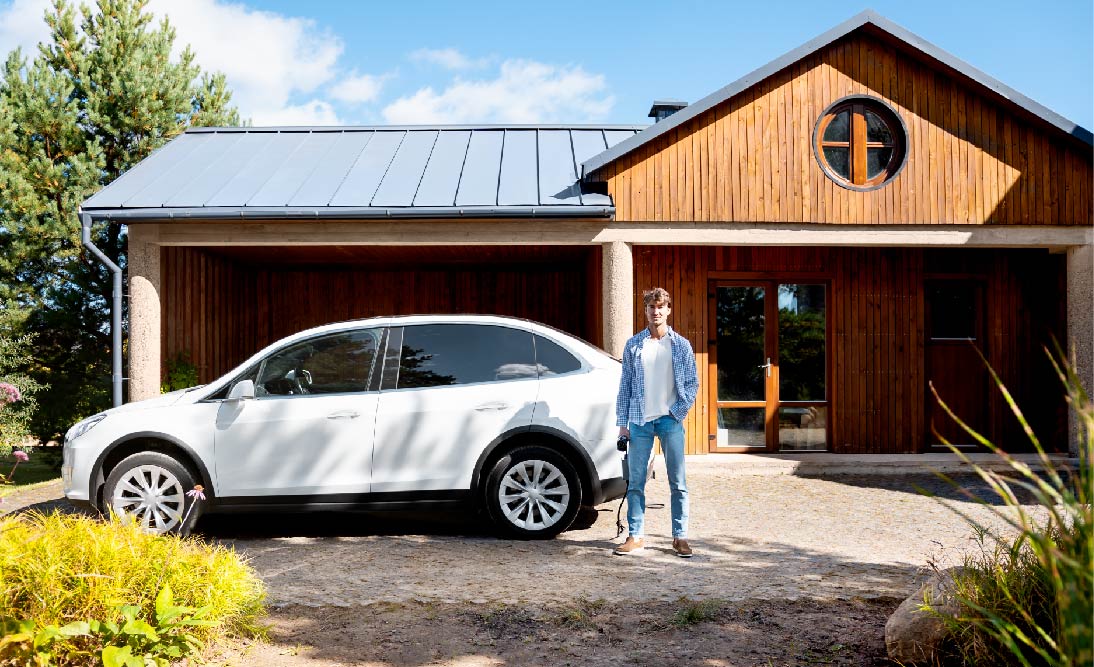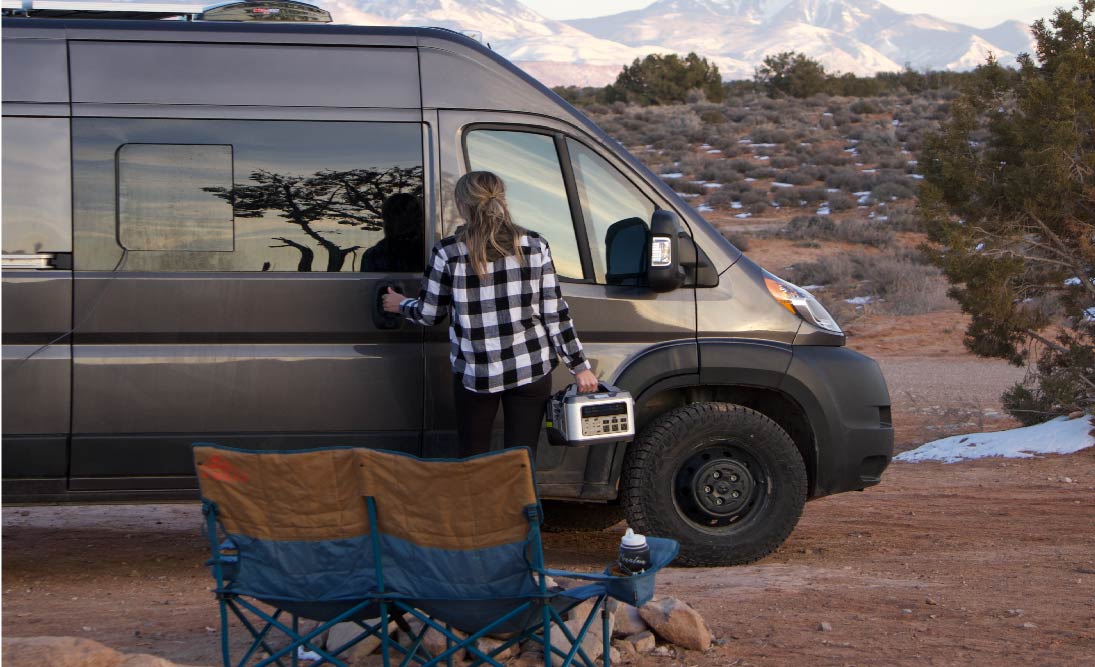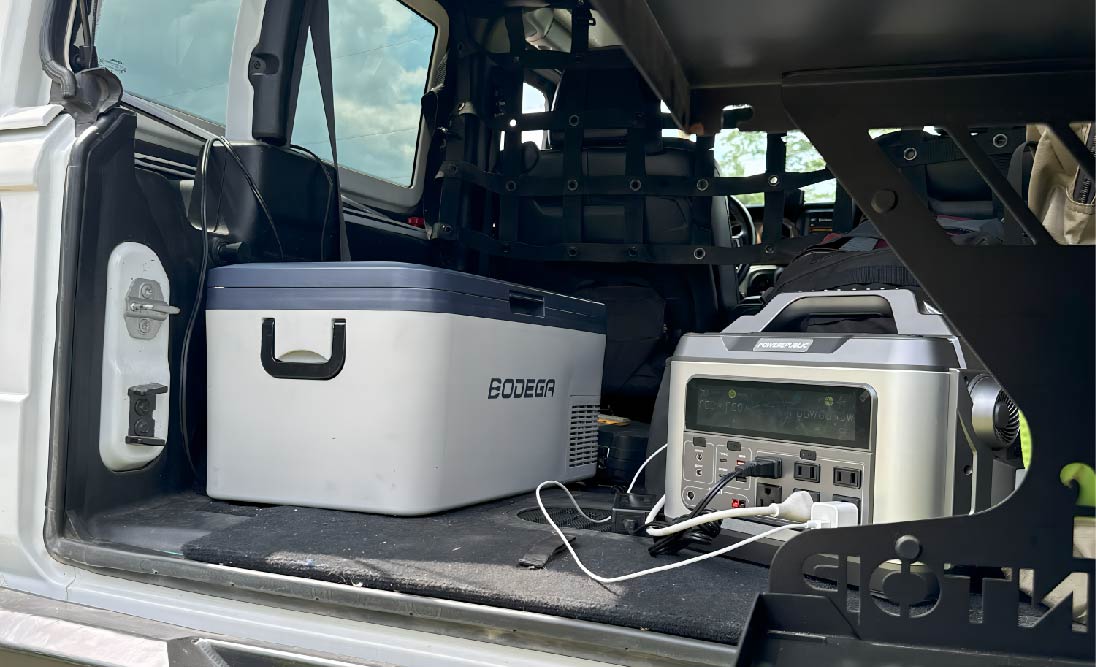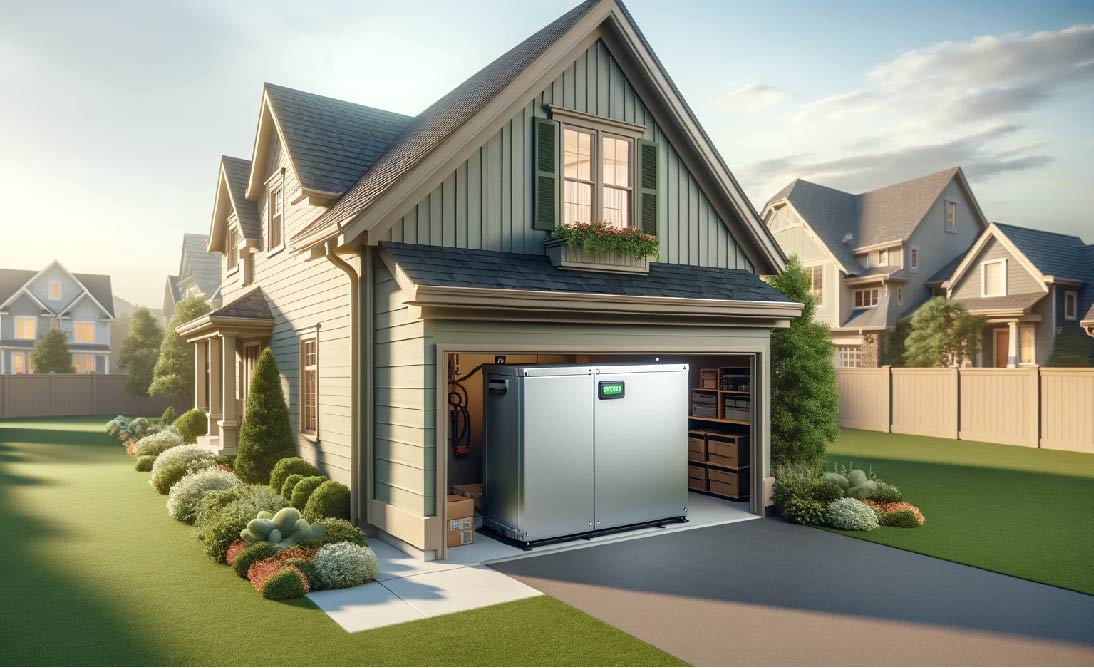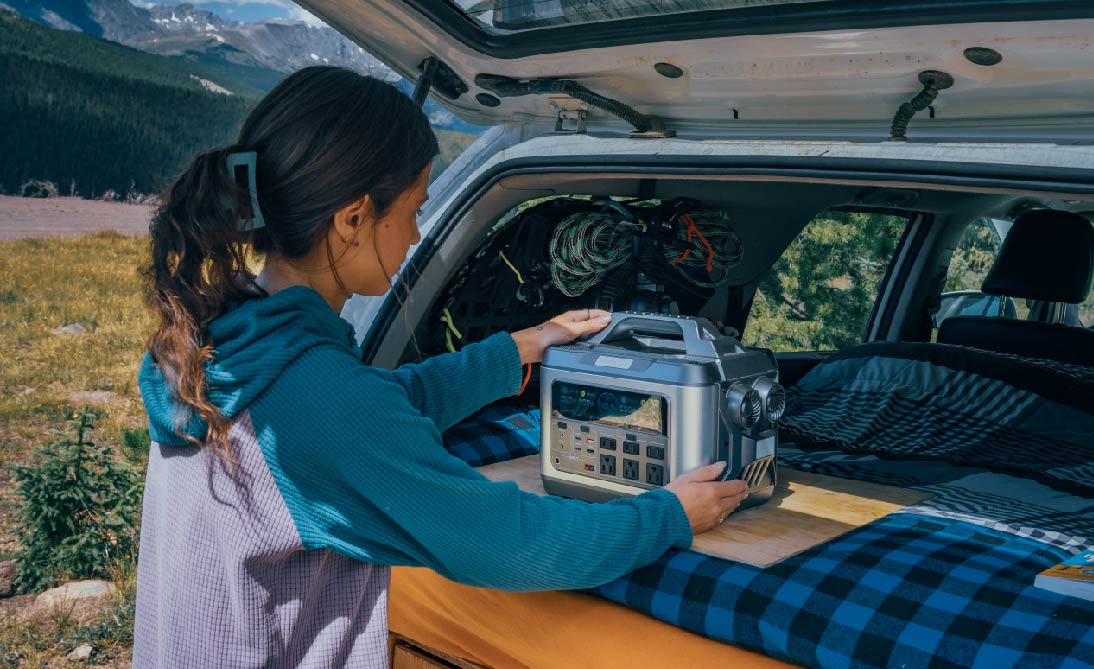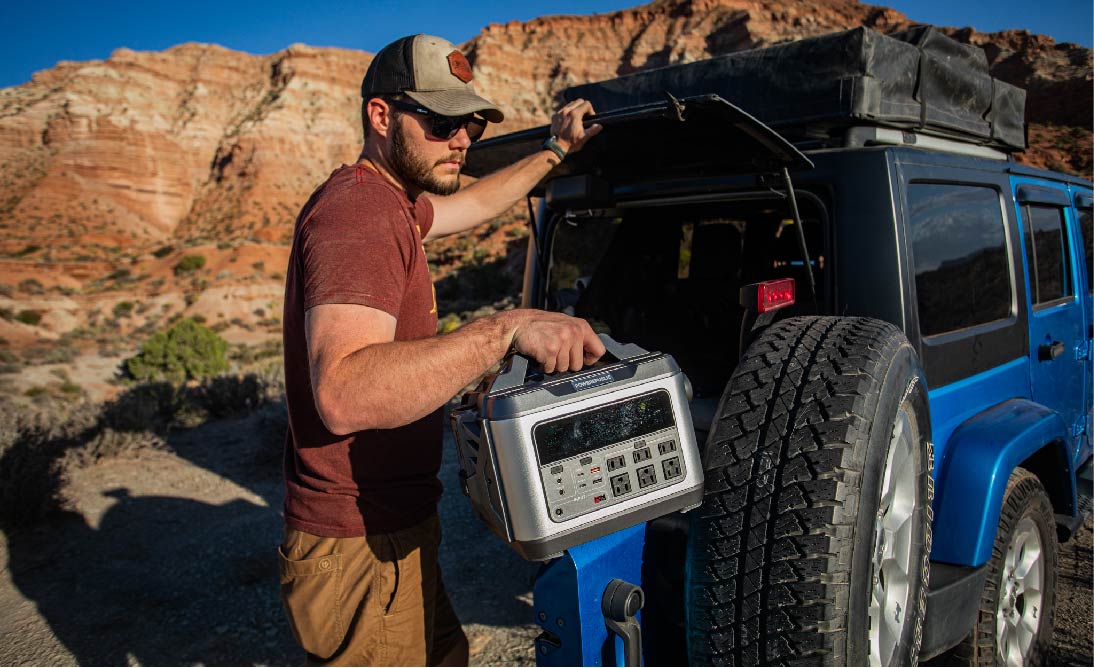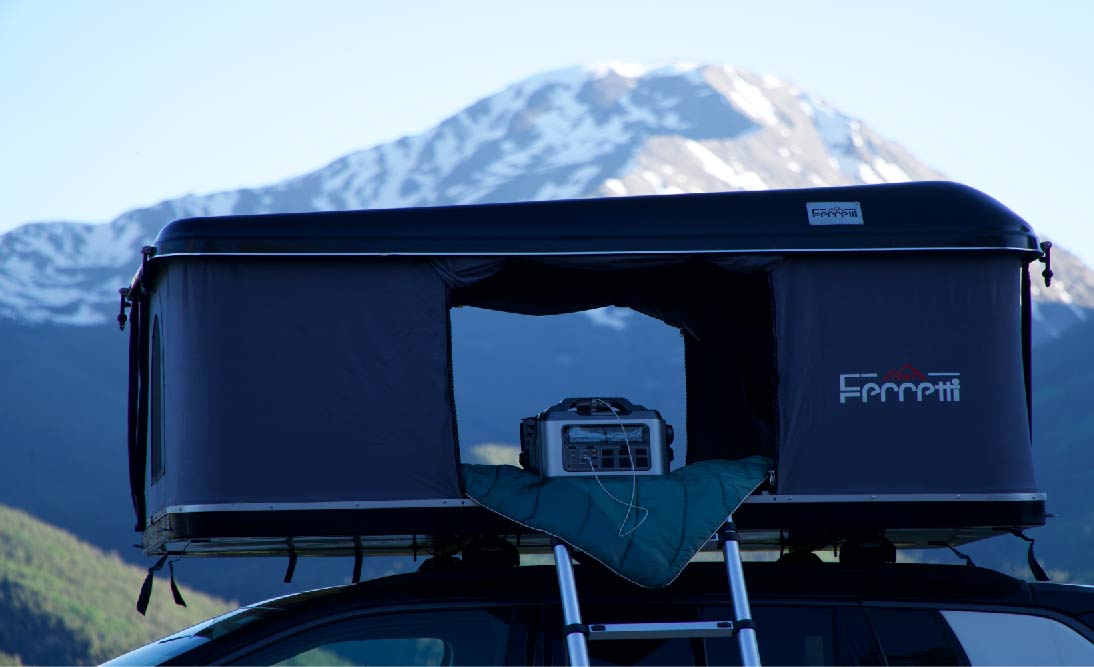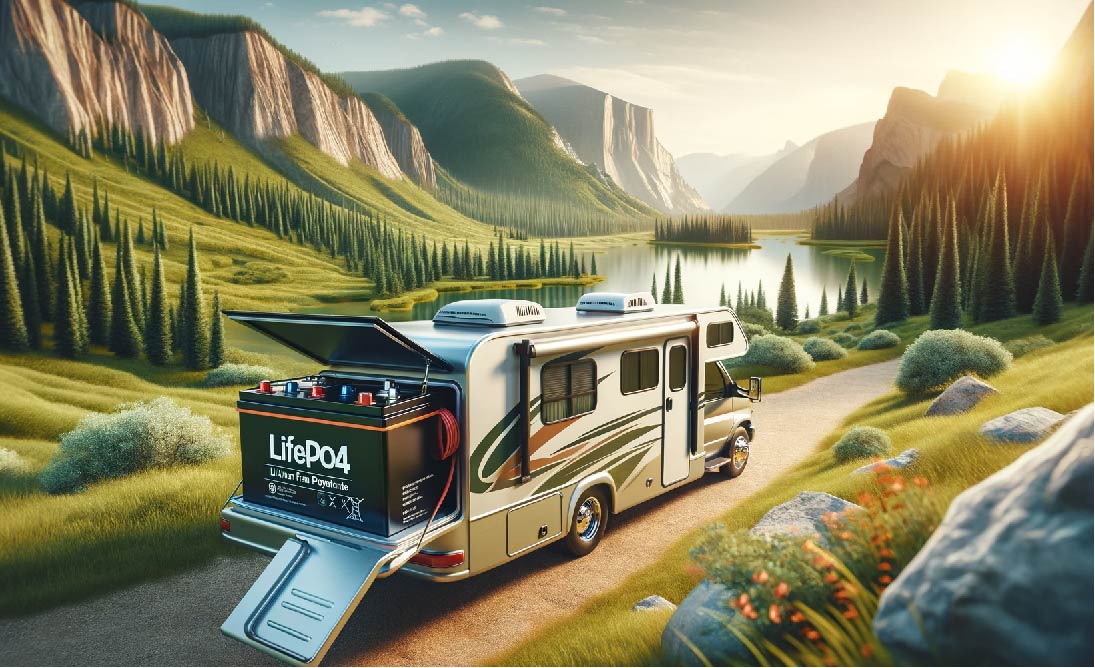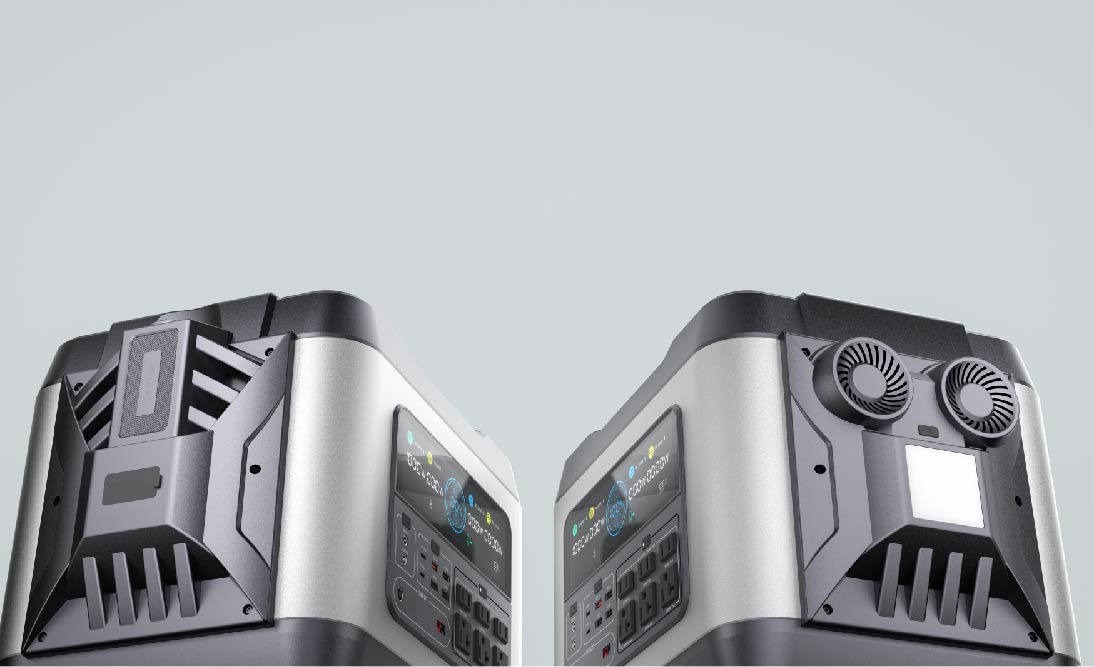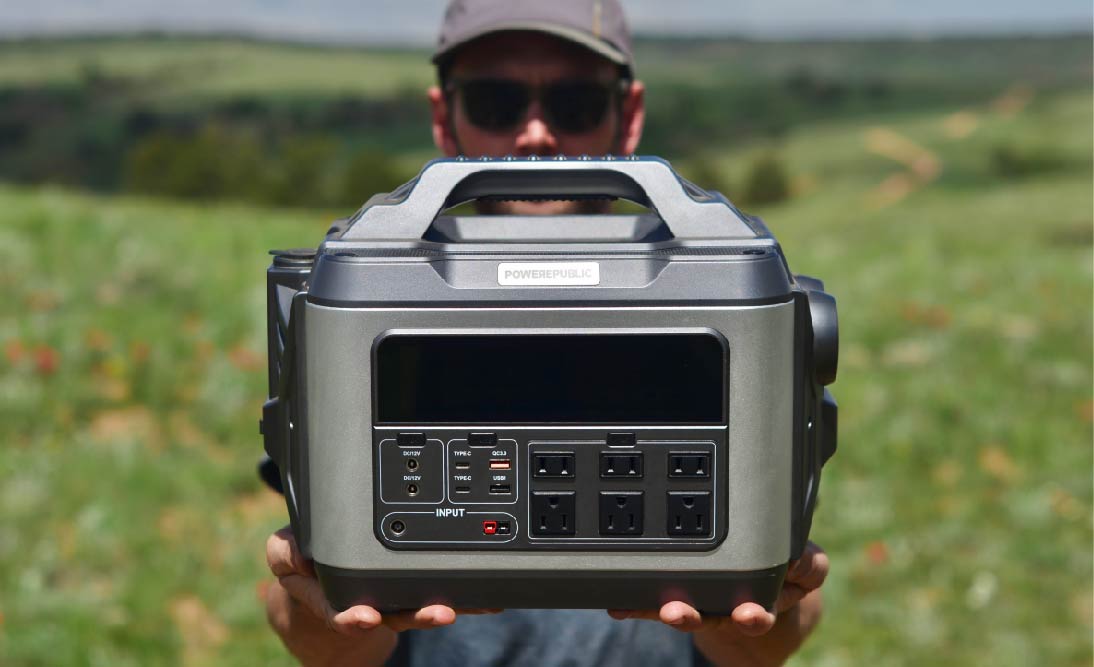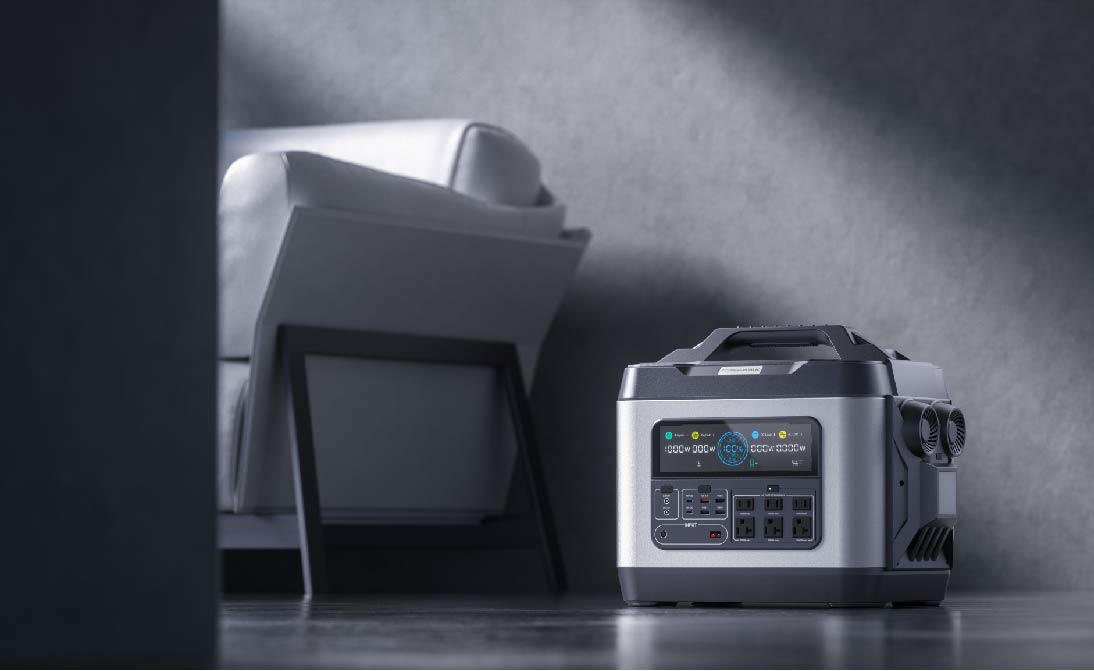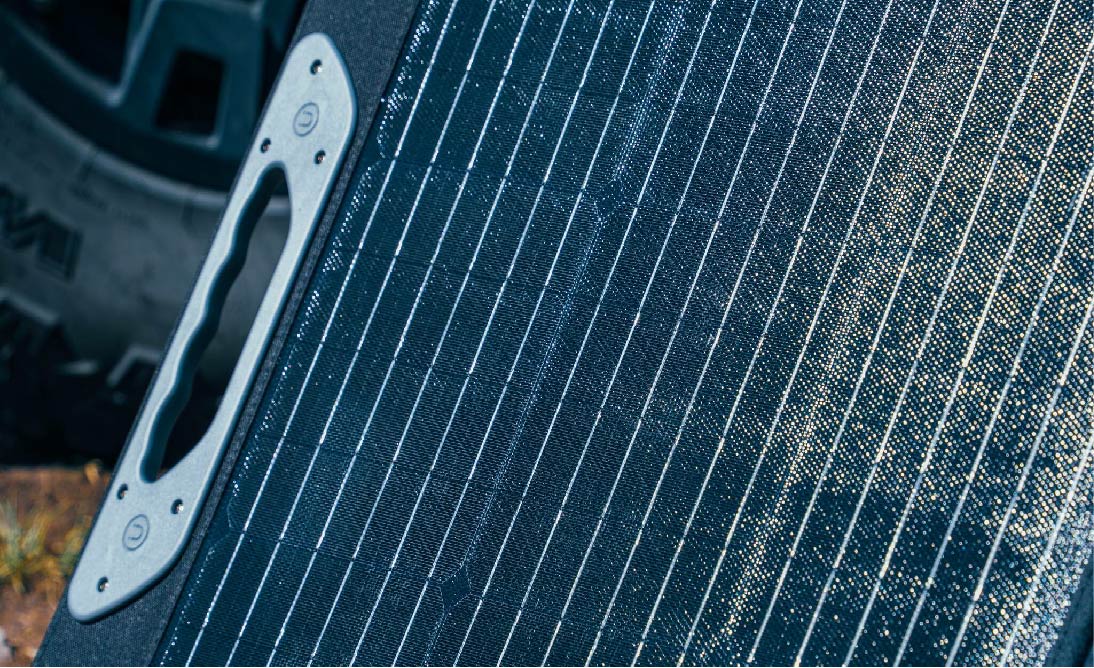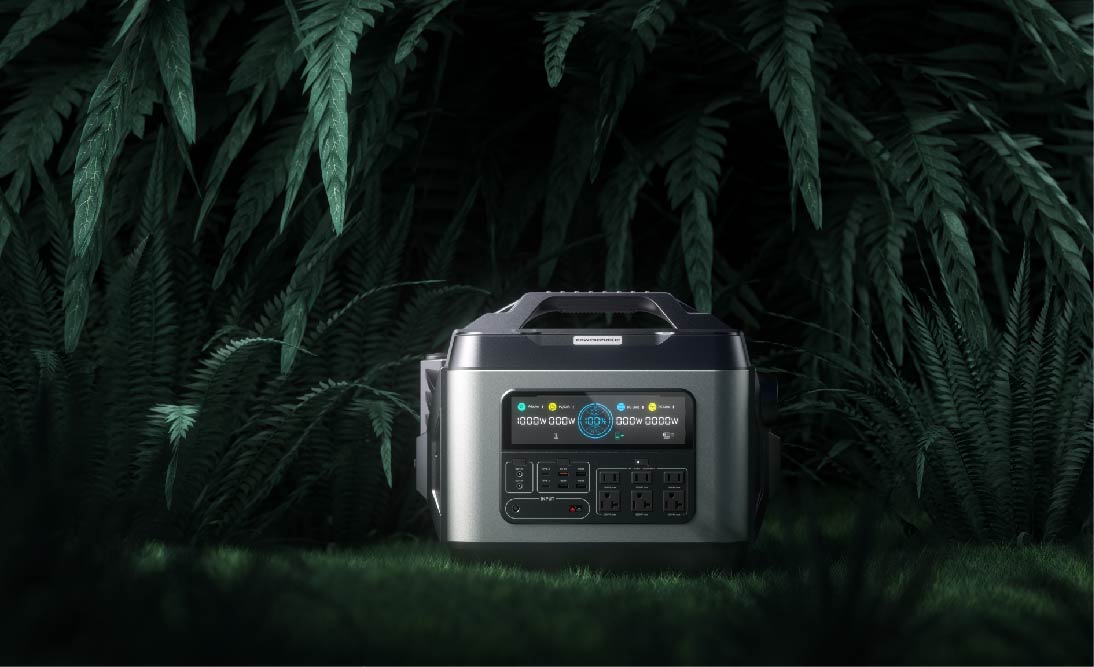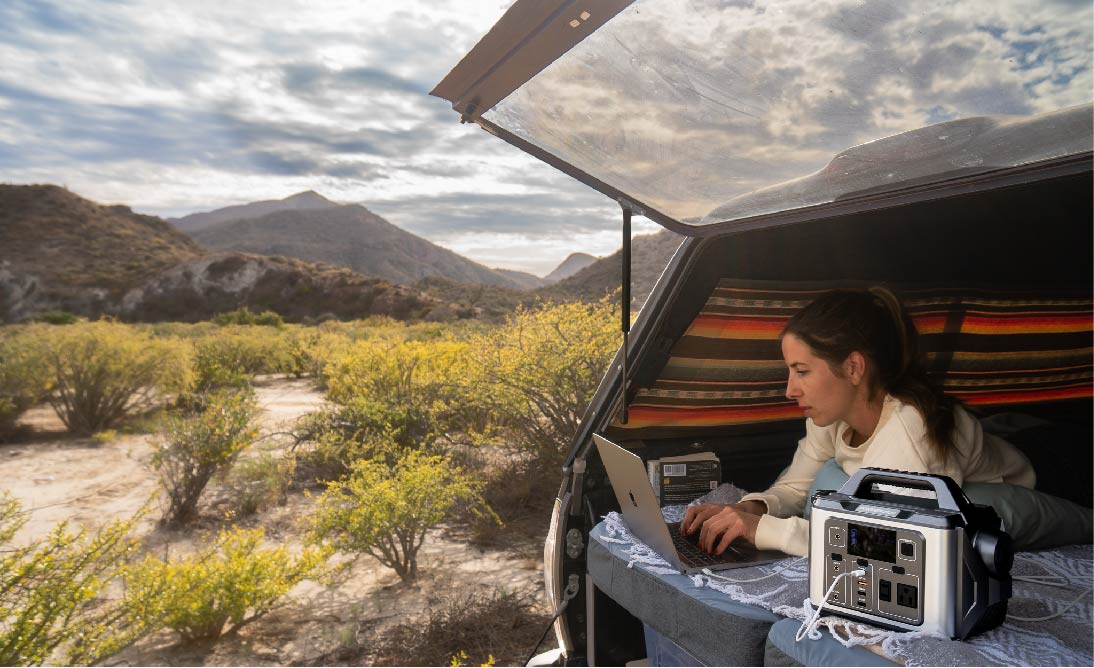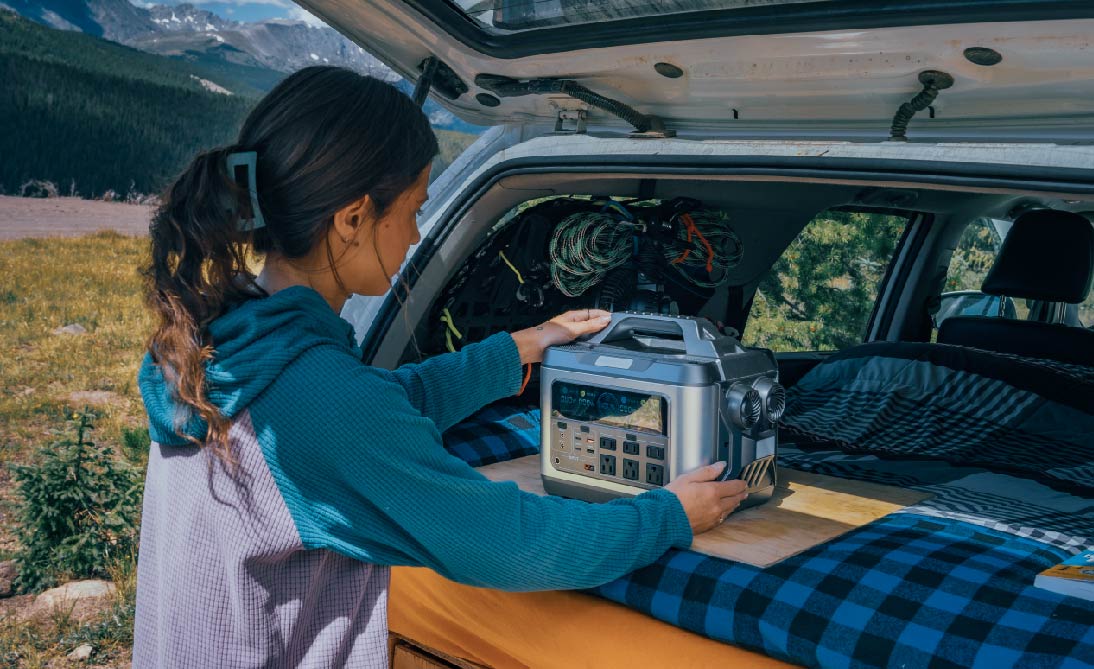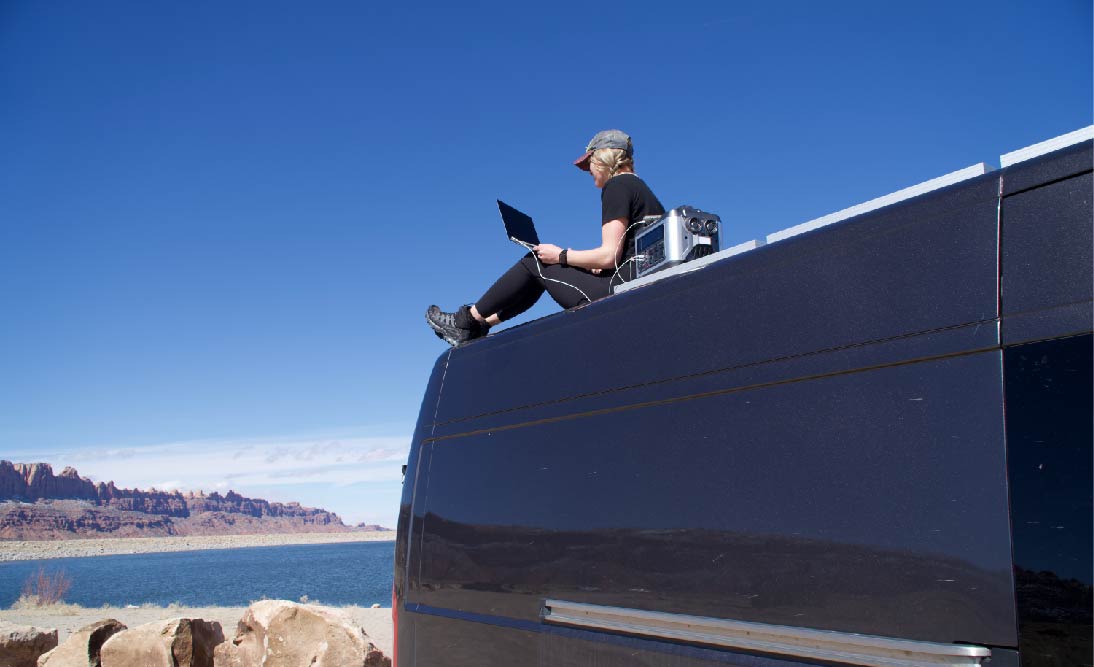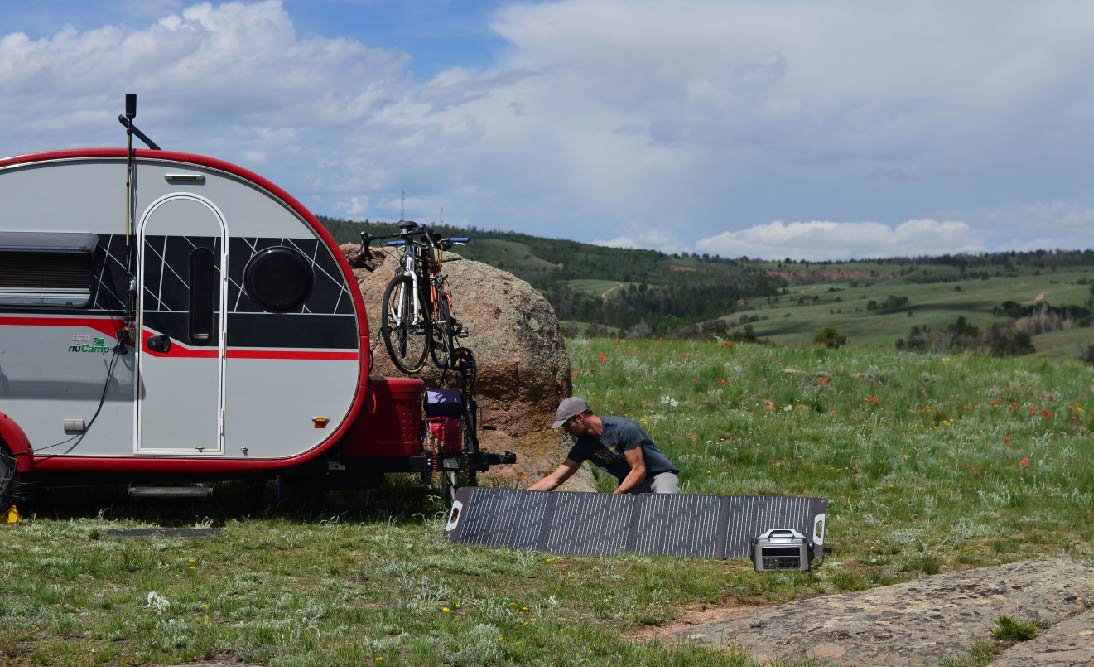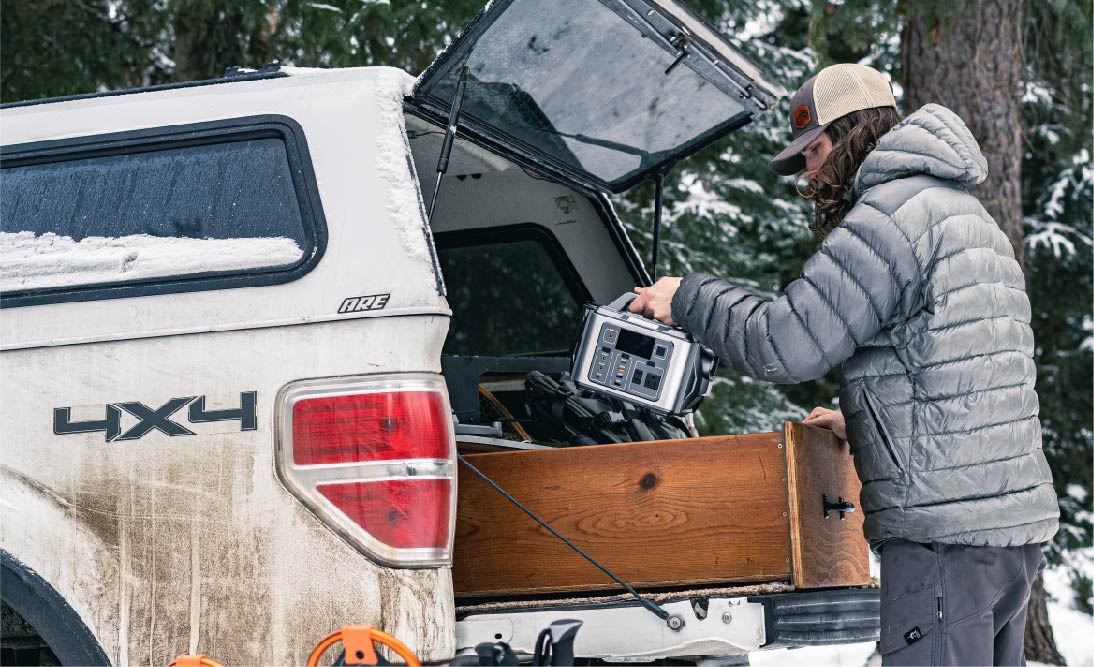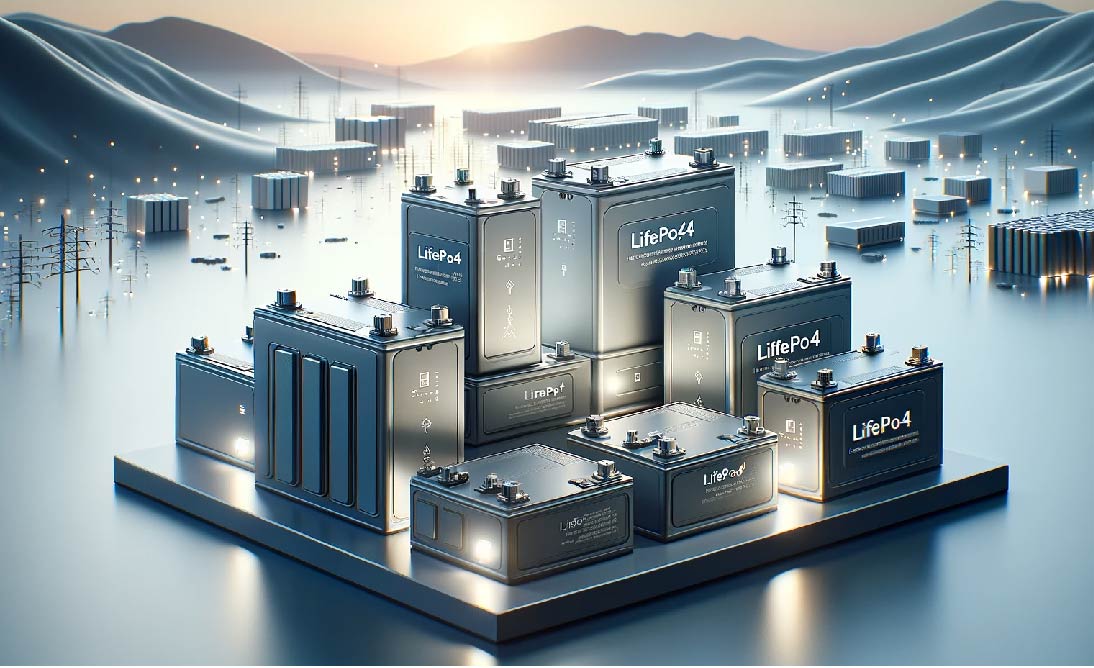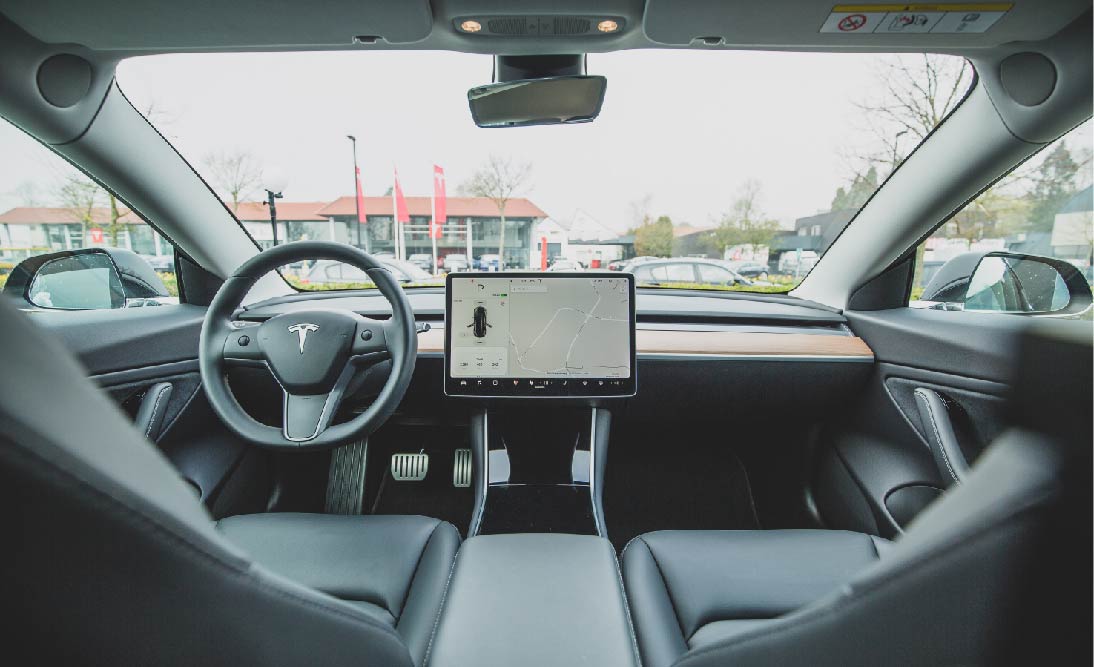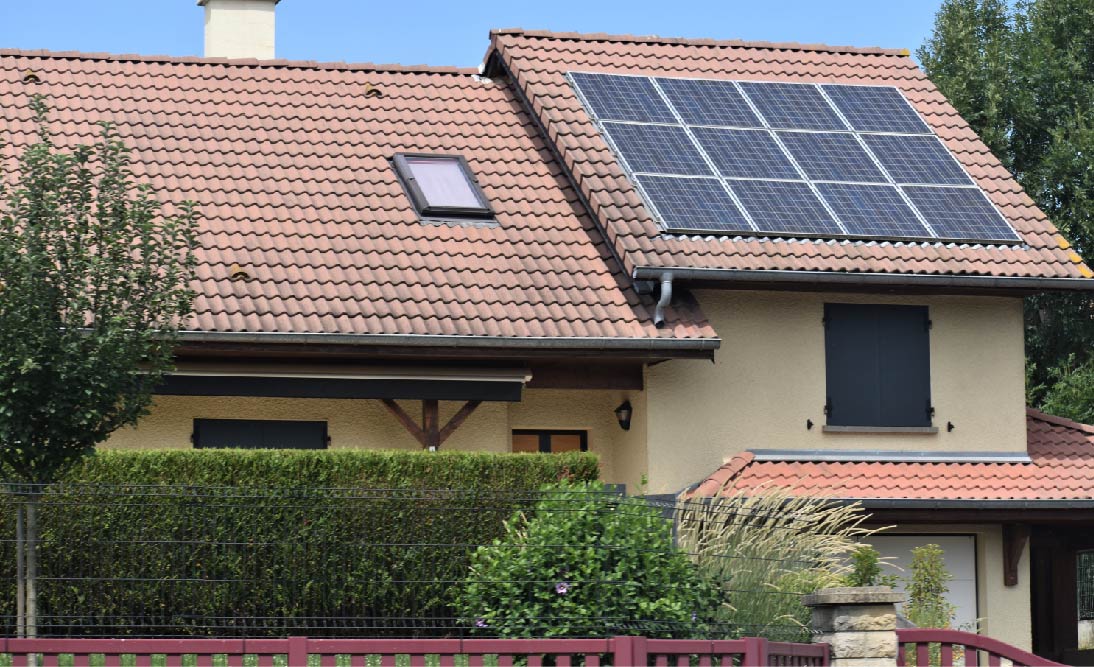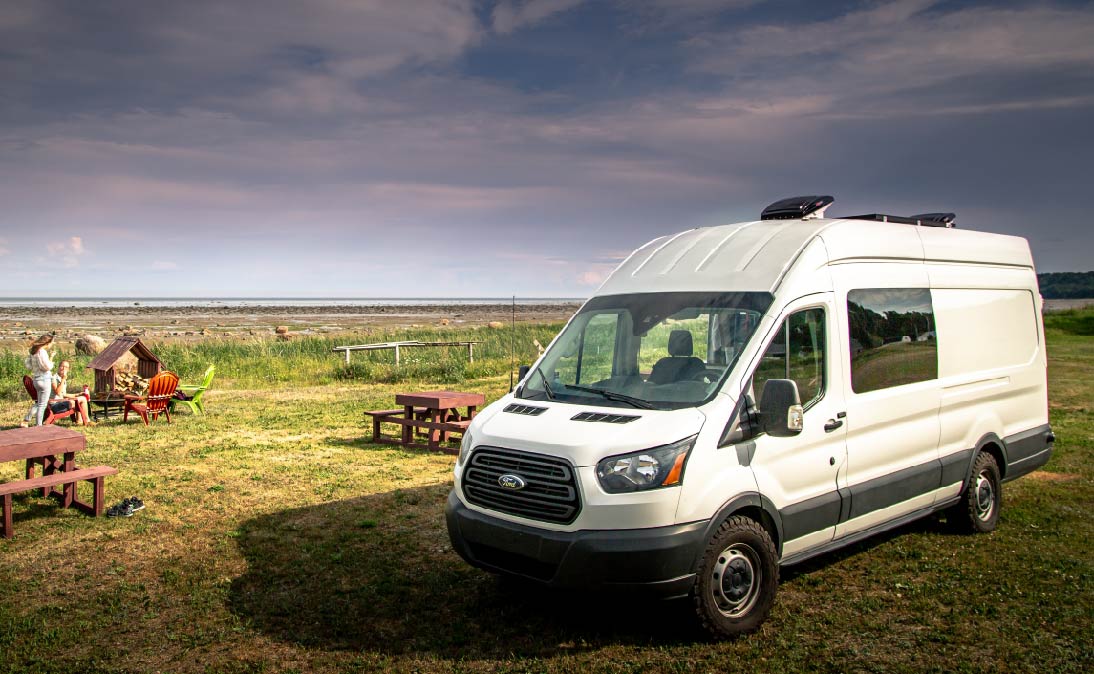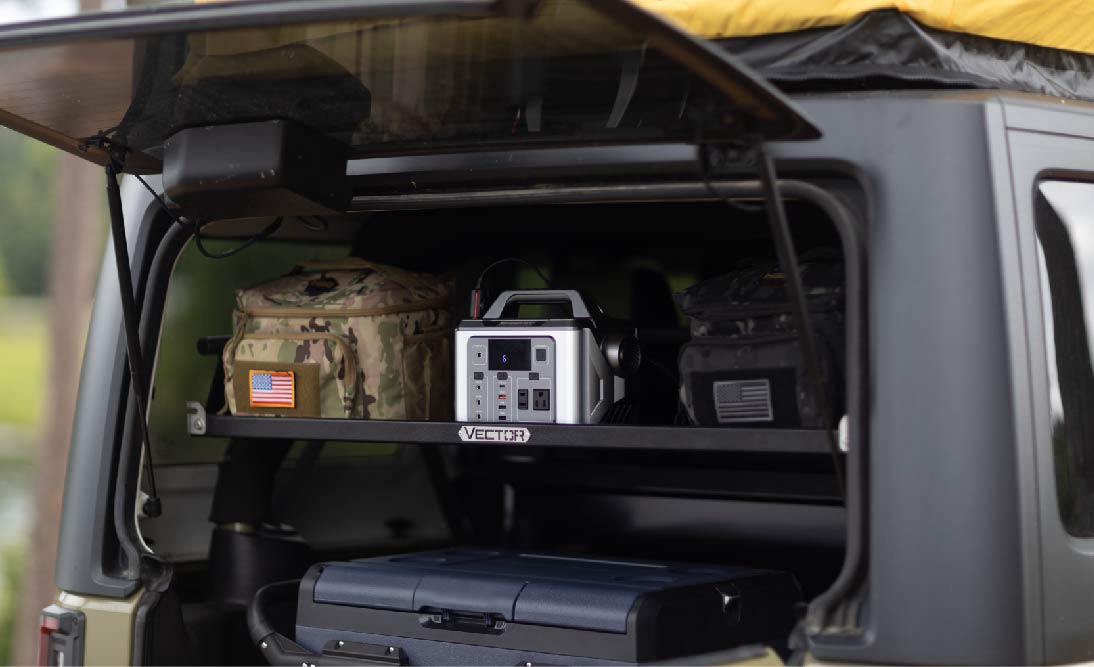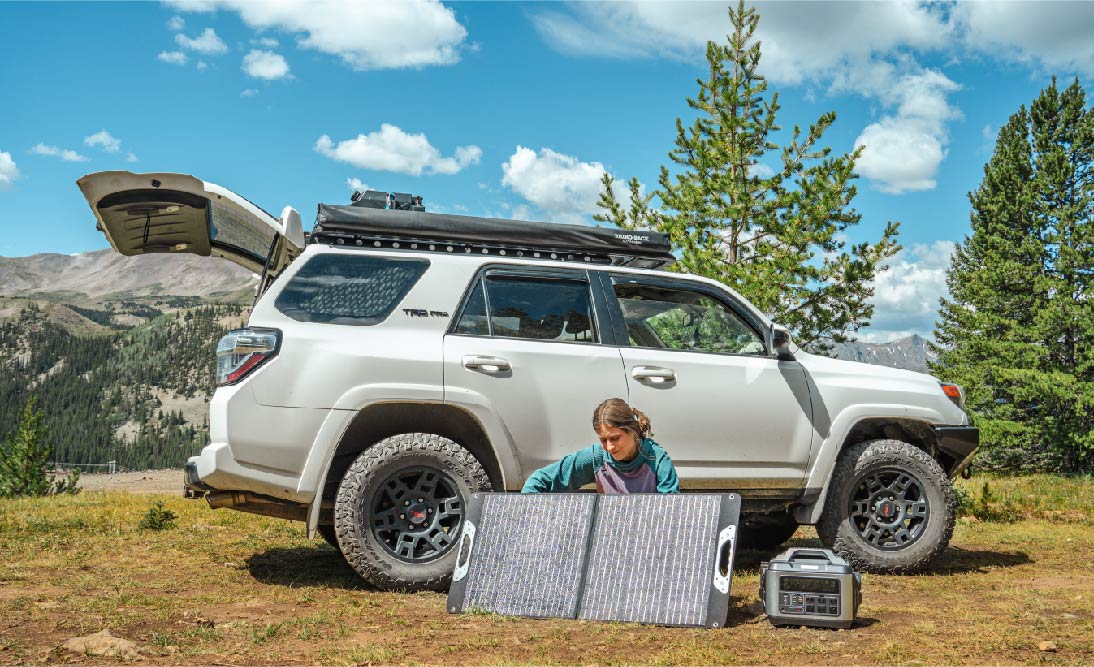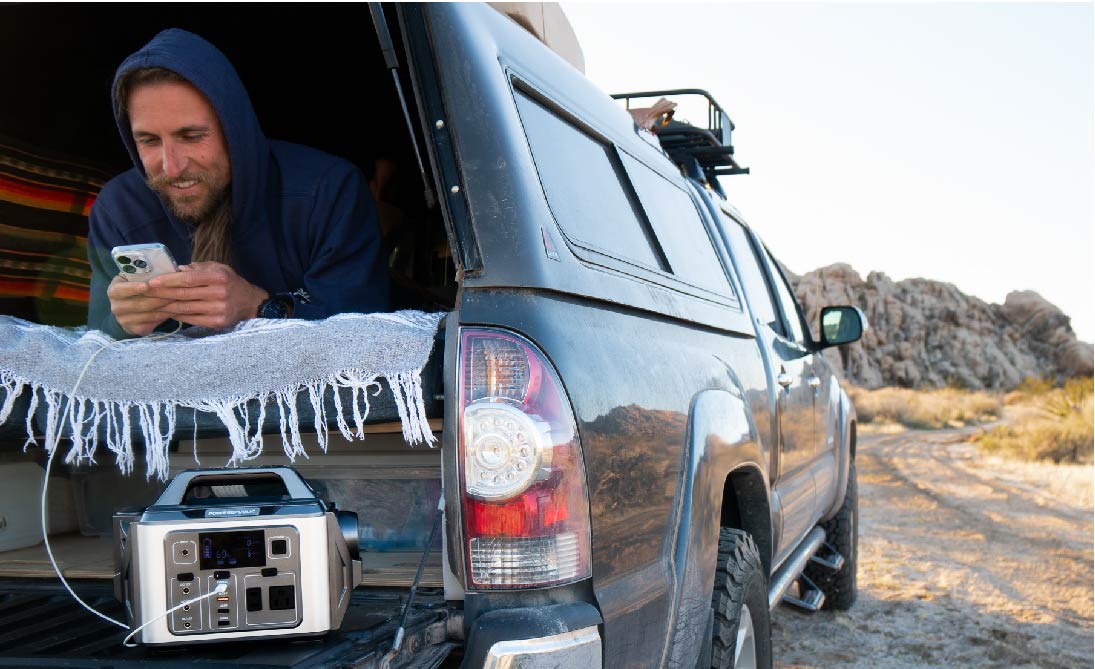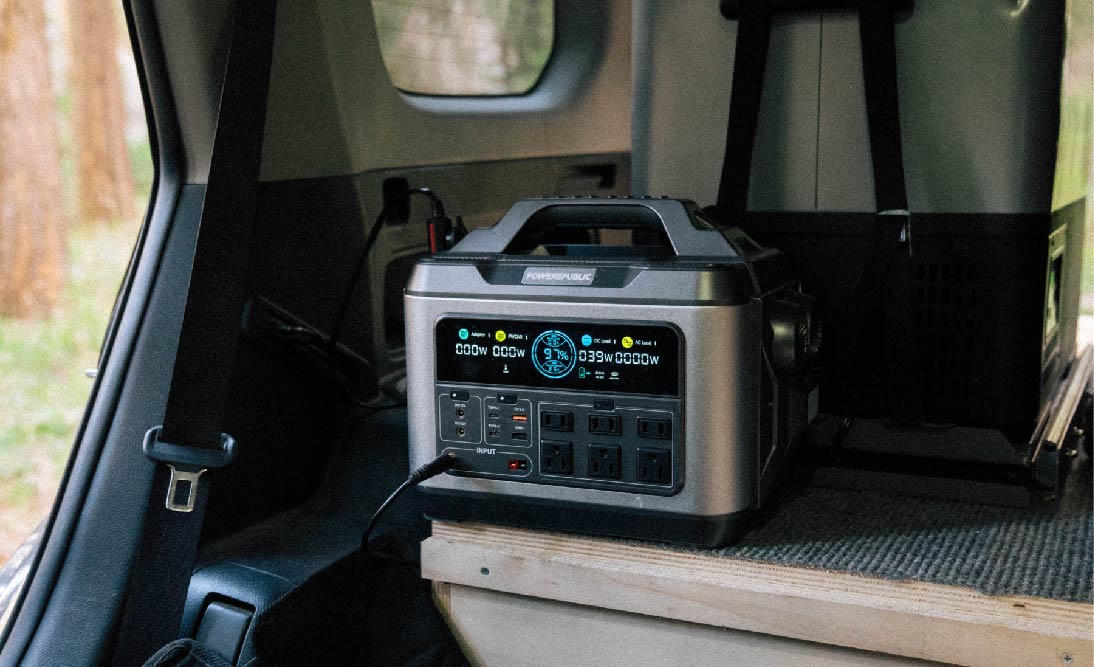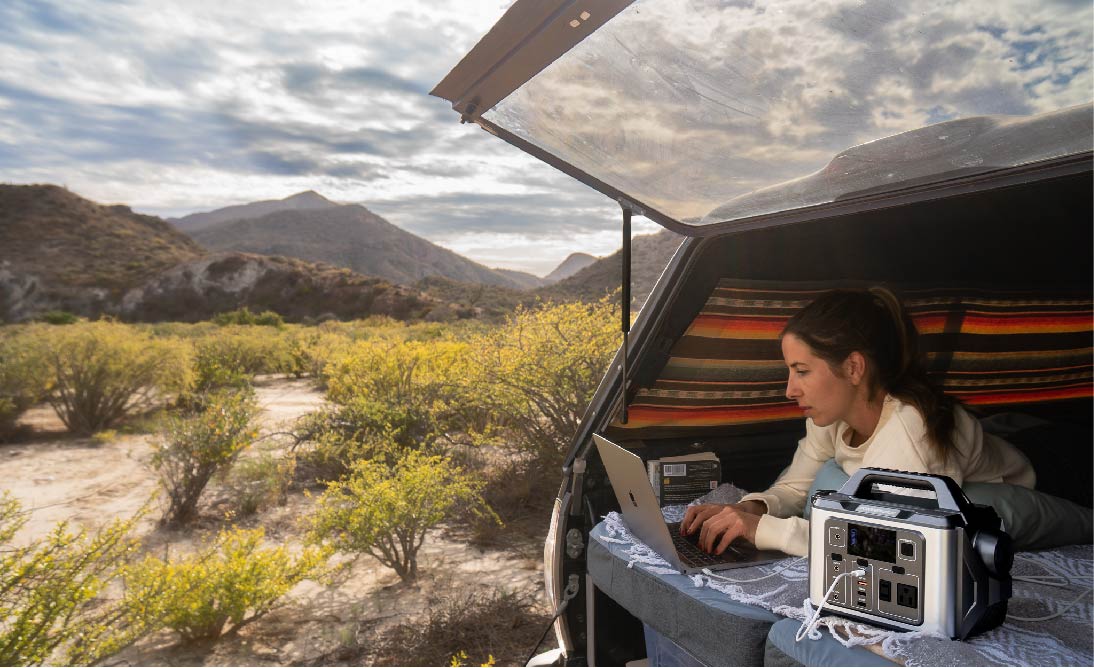As a lot of avid travelers or full-time nomads are seeking a self-sufficient and eco-friendly way to power their adventures, RV solar panels have emerged as a crucial game-changer, providing a seamless and sustainable solution to keep our journey juiced with the unlimited energy of the sun.
There are 4 different solar panel systems: Portable Solar Panel Systems, Fixed Solar Panel Systems, Adjustable-Angle Solar Panel Systems, and Multi-Faceted Solar Panel Systems. Thus, it is very important to know your actual needs before selecting one.
In this article, we will give a brief explanation of RV solar panel systems and how to select the best out of them. Let’s dive into it!
RV Solar Panels And Different Types Of RV Solar Systems
RV solar panels, also known as photovoltaic (PV) solar panels, are designed for recreational vehicles (RVs) to harness the sun's energy and convert it into electricity to power your devices and appliances. These panels are constructed with multiple solar cells made of semiconductor materials, such as silicon, which generate a direct current (DC) electrical output when exposed to sunlight.
The primary purpose of RV solar panels is to provide a renewable and eco-friendly source of power to charge the RV's batteries and run various electrical appliances and systems while on the road or parked in remote locations. By utilizing solar energy, RVers can reduce their reliance on traditional power sources, offering them greater freedom and the ability to enjoy off-grid adventures without sacrificing modern comforts.
RV solar panels typically come in different sizes and wattages, their efficiency can vary based on the quality and technology used. The most common types of RV solar panels are monocrystalline and polycrystalline panels, each with its advantages and disadvantages in terms of cost, efficiency, and performance.
If you want to know more about the differences between monocrystalline and polycrystalline, click HERE.
There are 4 different types of RV solar systems:

-
Portable Solar Panel Systems: Portable solar panel systems are designed to be compact and lightweight, making them easy to carry and install. They are commonly used for temporary installations on RVs or tents and can be adjusted according to the position of the sun.
-
Fixed Solar Panel Systems: Fixed solar panel systems involve mounting solar panels on the roof or sides of the RV, and securing them in place. They are typically used for RVs that stay in one place for an extended period, such as at a campsite or a stationary parking area.
-
Adjustable-Angle Solar Panel Systems: Adjustable-angle solar panel systems feature panels with adjustable angles, allowing you to optimize energy collection based on the sun's position and seasonal changes. They provide greater flexibility and efficiency.
-
Multi-Faceted Solar Panel Systems: This type of system utilizes multi-panel designs to capture sunlight from different directions. This increases energy collection efficiency and allows for power generation even in cloudy or partially shaded conditions.
Important Components In RV Solar Systems
Although there are 4 different types of RV solar systems, they consist of several key components that work together to harness solar energy and convert it into electricity to power various appliances.
Here are the main components of an RV solar system:
-
Solar Panels: The heart of RV solar systems. Solar panels contain multiple solar cells that absorb sunlight and convert it into direct current (DC) electricity. The most common types of solar panels used in RVs are monocrystalline and polycrystalline panels, known for their efficiency and durability.
-
Controller: The charge controller, also called a solar controller or regulator, regulates the electricity flow from the solar panels to the RV's battery bank. It prevents overcharging and damage to the batteries. Some charge controllers also offer additional features, such as monitoring battery status and performance.
-
Battery Bank: The battery bank consists of one or more deep-cycle batteries that store the electricity generated by the solar panels. They are designed to withstand repeated charging and discharging cycles. They provide a reliable source of power for the RVs.
-
Inverter: The main function of the inverter is to convert the DC (direct current) into AC(alternative current) to power most household appliances and devices, such as laptops, TVs, fridges, and so forth.
-
Wiring and Connectors: The wiring and connectors connect the solar panels, controller, battery bank, and inverter so that they can function normally.
RV Solar Panels: How Do They Work?
Although there are different types of RV solar panels for different solar systems, they work similarly. In short, RV solar panels work by harnessing sunlight and converting it into electricity through the photovoltaic effect.
The main process can be broken down into the following steps:
-
Absorption of Sunlight: When sunlight hits the solar panel's surface, photons from the sunlight are absorbed by the solar cells on the surface of the solar panels.
-
Electricity Generation: The DC electricity generated by the solar panels is stored in batteries or used to power DC appliances directly.
-
Controller and Battery Storage (Optional): The controller regulates the flow of electricity from the solar panels to the battery bank, preventing overcharging and maintaining the batteries at their optimal charge level.
-
Inverter (Optional): If you want to power some appliances that use AC(alternative current) in your RV, you'll need an inverter. The inverter converts the DC(direct current) stored in the batteries into AC(alternative current) to power the appliances.
Overall, RV solar panels provide a sustainable and eco-friendly solution to power your adventures on the road, offering energy independence and the ability to explore remote locations without relying solely on traditional power sources.
How To Select The Right-Sized RV Solar Panels?

It depends on several factors, including your energy consumption requirements, the size and wattage of the solar panels, your battery bank's capacity, and the amount of sunlight available in the areas you plan to travel. But it is not as complicated as it sounds. Let’s break them down into 3 steps:
Step 1 - Know Your Energy Consumption: This involves considering all the appliances, devices, and systems you plan to power with your solar systems, such as lights, refrigerators, water pumps, fans, chargers, laptops, and other gadgets. Add up all the energy compunction together to get a total energy consumption in watt-hours(Wh). For example, the total energy consumption per day for me is about 1,000Wh.
Step 2 - Determine Daily Sunlight Hour: know the number of sunlight hours of the day.
Step 3 - We can use the formula below to calculate:
Panel Capacity Needed (in watts) = (Daily Energy Consumption / 0.85-Conversion Rate) / Average Sunlight Hours
For example, if your daily energy consumption is 1000 watt-hours, and you expect an average of 5 hours of sunlight per day, the panel capacity needed would be:
Panel Capacity Needed = (1000 Wh / 0.85) / 5 hours = 236 watts
That being said, you will need RV solar panels or RV solar systems with an actual solar input of at least 236W to meet your daily energy needs. It is important to know the rated power of solar panels does not equal the actual solar input due to the efficiency of the panels and systems, the amount of sunlight, and other factors. For example, the actual solar input of POWEREPUBLIC 100W portable solar panels is about 50W to 70W.
Remember that every RV setup is unique, and factors like your travel habits, climate, and energy usage will influence your solar panel efficiency and requirements. By carefully assessing your needs and understanding the capabilities of different solar panels, you can select the right-sized solar system to power your RV adventures without worrying about power outages on the go.
Other Frequently Asked Questions
Q1: Portable Solar RV Panels vs Permanent Installing, which is better?
Portable Solar RV Panels: Portable solar panels have the advantage of mobility, allowing easy positioning to maximize sunlight exposure and the flexibility to move them as needed. Easy to install, with no drilling or permanent connection required for your RV. Portable panels may have lower wattage compared to permanent installations, which means they may generate less power.
Permanent Installing: Permanent solar setups usually have larger panel arrays, resulting in higher power generation potential. This can support greater energy needs in your RV.
Q2: Is it worth adding solar panels to my RV?
Adding solar power to your RV allows you to travel and live freely, no matter where your adventures take you. From powering fans, 24/7 in scorching summers to keeping your favorite beverages chilled, solar energy meets your needs.
With solar panels, now you can drive your RV without being dependent on the power grid, allowing you to venture into more remote areas without worrying about a lack of power supply.
Conclusion
Whether you're a seasoned RVer or a curious beginner, with RV solar panels, you're now can harness green energy without limits, unlocking the potential for endless exploration and embracing the road less traveled.
By understanding how RV solar panels work and how to calculate the right panel capacity, outdoor adventures can tailor their solar setups to meet their specific energy requirements. The benefits of RV solar panels extend far beyond reduced reliance on traditional power sources; they offer the freedom to explore remote and off-grid destinations, enriching the journey with unrivaled experiences, and breathtaking vistas, and reduce carbon footprint.
So, set your sights on the horizon, let the sun be your guide, and venture forth into a world of freedom, self-sufficiency, and boundless discovery, all made possible through the marvel of RV solar panels. Happy travels and may your road be forever lit by the brilliance of solar energy!
Explore POWEREPUBLIC Portable Solar Panels and Solar Generator Kits!
